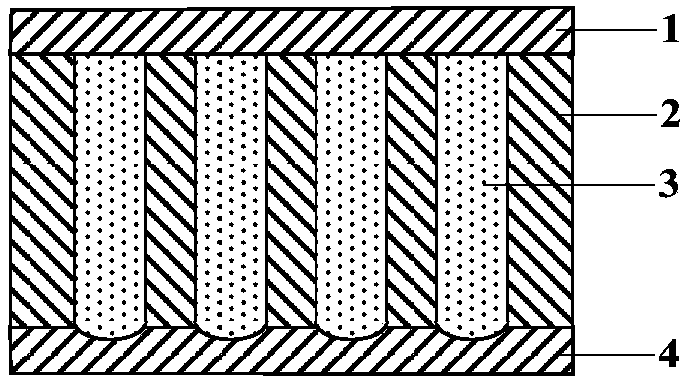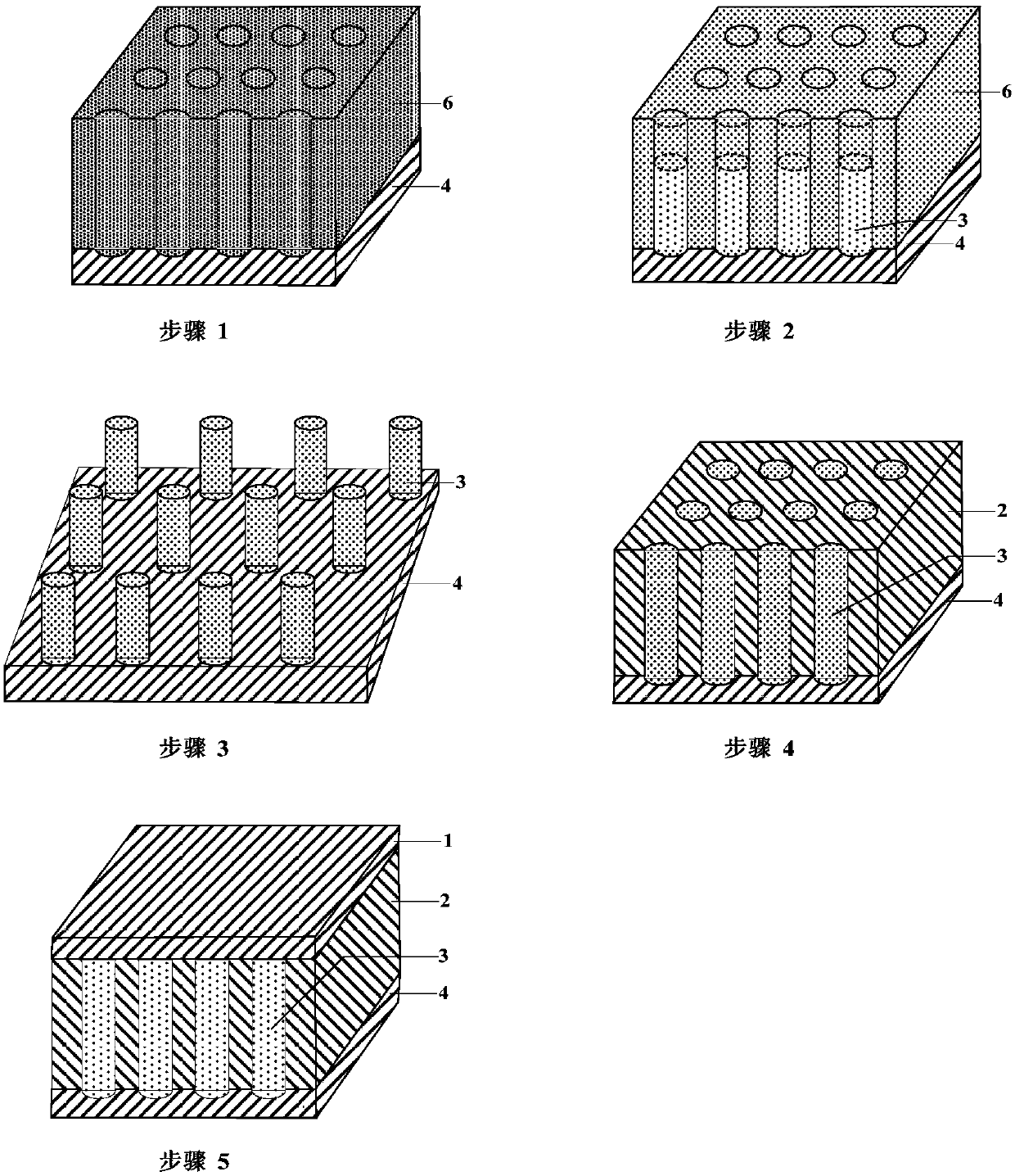Solid-state lithium-ion battery of hybridized nanostructure and preparation method of solid-state lithium-ion battery
A lithium-ion battery and nanostructure technology, applied in the field of lithium-ion batteries, can solve problems such as poor safety and low energy density, achieve the effect of large and orderly specific surface area, and improve ionic conductivity
- Summary
- Abstract
- Description
- Claims
- Application Information
AI Technical Summary
Problems solved by technology
Method used
Image
Examples
Embodiment
[0020] Step 1, transplanting an ultra-thin anodized aluminum (AAO) transplantation template onto an ITO substrate. The size specifications of the template are: the pore diameter is 80nm, the thickness is 100-500nm, and the hole spacing is 50-100nm.
[0021] Step 2, adopting the method of magnetron sputtering, sputtering, depositing, and filling lithium lanthanum titanate in the holes of the template to form a nano-column array. Specifically, the lithium lanthanum titanate target uses Li 0.33 La 0.557 TiO 3 .
[0022] Step 3. Put the ITO substrate prepared in step 2 into a 1mol / L sodium hydroxide (NaOH) solution, react at room temperature for 24 hours, and erode the anodized aluminum template to obtain a lithium lanthanum titanate nanocolumn array.
[0023] Step 4, dissolve 0.2g of PAN in 10mL of DMF, then add 0.241g of LiClO 4 , the solution was spin-coated on the ITO substrate prepared in step 3 by spin-coating method, and baked in a vacuum oven at 80°C for 24 hours to e...
PUM
 Login to View More
Login to View More Abstract
Description
Claims
Application Information
 Login to View More
Login to View More - R&D
- Intellectual Property
- Life Sciences
- Materials
- Tech Scout
- Unparalleled Data Quality
- Higher Quality Content
- 60% Fewer Hallucinations
Browse by: Latest US Patents, China's latest patents, Technical Efficacy Thesaurus, Application Domain, Technology Topic, Popular Technical Reports.
© 2025 PatSnap. All rights reserved.Legal|Privacy policy|Modern Slavery Act Transparency Statement|Sitemap|About US| Contact US: help@patsnap.com


